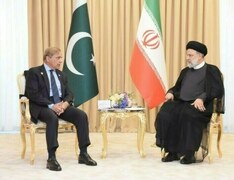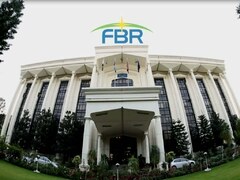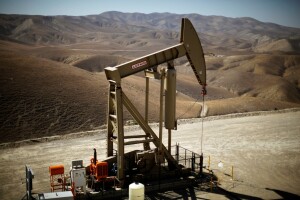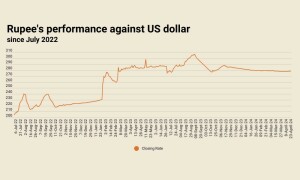The world, including developing countries where food inflation is particularly on the higher side, is facing inflationary pressures. A recent Financial Times (FT) article ‘ECB official and OECD warn of rising inflation risks’ pointed out in this regard: ‘Inflation will continue to rise over the next two years, according to revised projections by the OECD, which expects price increases to be significantly higher in 2021 and in 2022 than it previously forecast for most G20 countries.’ OECD, in its September 2021 economic outlook report titled ‘Keeping the recovery on track’, pointed out with regard to rising inflation that ‘Inflation has risen sharply in the United States, Canada, the United Kingdom and some emerging-market economies... Higher commodity prices and global shipping costs are currently adding around 1½ percentage point to annual G20 consumer price inflation, accounting for most of the inflation upturn over the past year. …The difficult policy choices faced by some emerging-market economies with high debt and rising inflation are also a potential downside risk.’
At the same time, if proper fiscal stimulus is not provided to countries globally, in particular to developing countries, which rely heavily in this regard on greater international financial support, and if the limitedness of macroeconomic policies is not understood in bringing macroeconomic stability, there are serious risks of such pressures tuning into stagflationary consequences for economies in general.
Nouriel Roubini in his recent article ‘The stagflation threat is real’ indicated in this regard: ‘Until recently, I focused more on medium-term risks. But now one can make a case that “mild” stagflation is already underway. Inflation is rising in the United States and many advanced economies, and growth is slowing sharply, despite massive monetary, credit, and fiscal stimulus. There is now a consensus that the growth slowdown in the US, China, Europe, and other major economies is the result of supply bottlenecks in labour and goods markets. The optimistic spin from Wall Street analysts and policymakers is that this mild stagflation will be temporary, lasting only as long as the supply bottlenecks do.’
Moreover, economics editor at Guardian, Larry Elliot, pointed out in his recent article ‘OECD warns over ending stimulus policies despite inflationary pressures’ as follows: ‘The west’s leading economic thinktank has warned governments and central banks against an over-hasty withdrawal of support for growth amid concerns that recovery from the pandemic-induced recession is incomplete. The Paris-based Organisation for Economic Co-operation and Development (OECD) said a continuation of the stimulus policies of the past 18 months was justified because the recent pickup in inflation was likely to prove temporary. …Fuelled by recovering demand for goods and supply chain strains, inflation is expected to peak towards the end of the year at 4.5% on average in the Group of 20 leading economies, before easing to 3.5% by the end of 2022. The OECD said a rapid increase in demand as economies reopen had pushed up prices in key commodities such as oil and metals as well as food, which had a stronger effect on inflation in emerging markets. The disruption to supply chains caused by the pandemic has added to cost pressures, while shipping costs had increased sharply.’
Pakistan, like many other developing countries, and in particular those under the International Monetary Fund (IMF or simply the ‘Fund’) programmes, need to be saved from such stagflationary consequences as well, and for this the Fund will have to shift away from its pre-pandemic bread-and-butter policy of aggregate demand squeeze. So, while global commodity prices (oil and food in particular causing difficult consequences in terms of imported inflation and balance of payments (BOP) for developing countries) have been rising at a very high pace, yet the recessionary onslaught of the pandemic for many months, causing severe hit on growth, unemployment, and poverty, does not allow countries to move away from much-needed stimulus policies.
Inflation is primarily a supply shock phenomenon in Pakistan, both generally and in recent months as well. Hence, State Bank of Pakistan (SBP) by raising policy rate by 25 basis points to revise rate to 7.25 per cent, seems to have only indicated some restraining signal to counter inflation, given squeezing aggregate demand policies have very limited scope, since rising import payments in recent months have a strong weight in terms of higher international commodity prices, and local inflationary pressures also primarily reflect expenditure on meeting such inelastic, essential natured items with high imported inflationary component. At the same time, as indicated, fiscal policy also needs to support recovery, and continue to make essential and quite steep vaccine purchase, and overall public health expenditure needs. So, it makes little sense to practice contractionary fiscal policy during the pandemic.
The IMF should also understand this, and instead of going for the usual demand-squeeze policies, should understand the high level of limitations of especially developing countries in terms of managing inflationary pressures and debt management through macroeconomic policy instruments. Instead, and which has not happened much as such up till now, is a substantially higher support from IMF in terms of a lot greater special drawing rights (SDRs) allocation to developing countries. Indeed, in this the IMF would require greater support from required legislation from the US Congress (a bill for additional SDR allocation to the tune of 1.54 trillion SDRs, which has been reportedly passed by the House of Representatives, is pending in Senate for approval). Moreover, unlike the recent allocation of SDRs, future releases, if any, should be allocated by the IMF through employing need-based allocation towards countries with greater financial support, and not through the usual quota-sharing formula.
It does not make much sense, that while the West, in particular the US, continues to take the road of injecting very high fiscal stimulus, it should block much-needed greater allocation of SDRs. In a recent article ‘Republicans are blocking desperately needed pandemic relief for the world’s poor’, Center for Economic Policy and Research (CEPR) co-director, Mark Weisbrot, highlighted the contradictory role of Republican senators who have not supported up till now much-enhanced allocation of SDRs, even when there has been no criticism on such an allocation from economists generally.
He pointed out in this regard: ‘the House passed legislation last year to have the U.S. government approve “at least 2 trillion SDRs” – worth $2.8 trillion – at the Fund. But Republicans blocked the legislation in the Senate. When Biden took office, the new Treasury department agreed, at the IMF, to about as much as they could approve without a vote of Congress. This was the $650 billion that the IMF issued last month. But this $650 billion issuance was not nearly enough to meet the needs that most of the world is facing, in order to save the lives of people who can be saved. …So members of Congress have come back, with legislation in both the House and Senate, to get the rest of what the House approved last year. It has passed the House again this year, but Republican leadership is still blocking it in the Senate.’
The IMF, therefore, needs to understand that countries, including Pakistan, could fall into deep recesses of stagflation, if the IMF follows the usual demand management policies policy prescription path. Instead, it should understand that the country’s macroeconomic stabilization, expenditure and growth needs primarily require support from greater allocation of SDRs, and overall higher level of development assistance from development partners. Moreover, the real source of economic problems’ solution, including those of Pakistan’s, lies mainly in terms of downward adjustment in international commodity prices, greater vaccine equity regime, institutional-natured reforms of a medium-term time-scale mostly, and in much-higher financial support from multilateral and rich bilateral development partners. And therefore, pushing Pakistan to control inflation, or to drastically finance development and stimulus needs through domestic resource mobilization during pandemic, greater austerity, and upward policy rate adjustments will most probably not allow the country achieve greater macroeconomic stability, but would also likely to exacerbate unemployment, poverty, and take the country to lower economic growth levels.
(The writer holds a PhD in Economics from the University of Barcelona; he previously worked at the International Monetary Fund)
He tweets@omerjaved7
Copyright Business Recorder, 2021
The writer holds a PhD in Economics degree from the University of Barcelona, and has previously worked at the International Monetary Fund. His contact on ‘X’ (formerly ‘Twitter’) is @omerjaved7























Comments
Comments are closed.